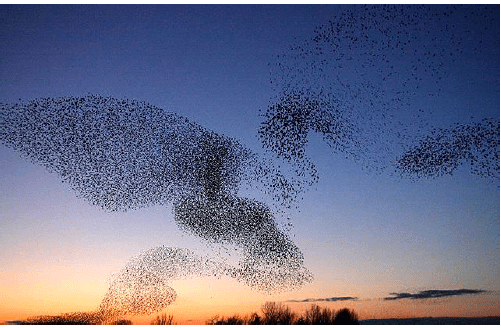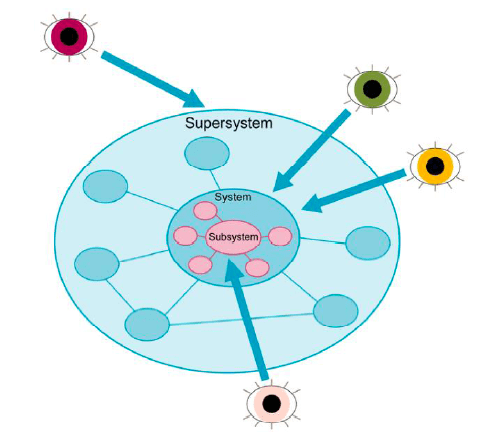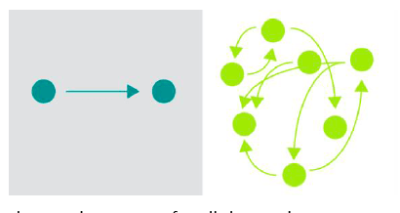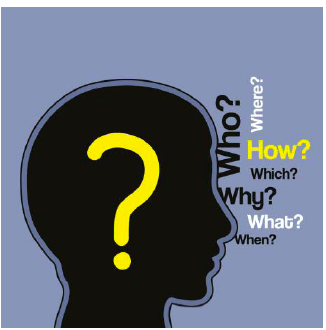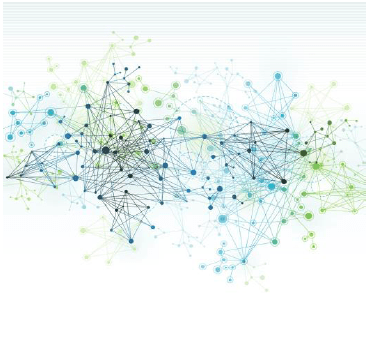This article was originally published in the July 2018 Edition of The Solutions Journal
“For some, the development of systems thinking is crucial for the survival of humanity.” – John Sterman
“The light begins to twinkle from the rocks: The long day wanes: the slow moon climbs: the deep Moans round with many voices. Come, my friends, ’Tis not too late to seek a newer world.” – Alfred Lord Tennyson, Ulysses
Humanity stands at a precipice. Overpopulation, resource scarcities, degraded ecosystem functioning from pollution and biodiversity loss, and anthropogenic climate change are damaging the life-supporting capacity of the planet. Diminishing returns on fossil fuel energy investments, combined with their dwindling availability and environmental harm, threaten industrial civilization. Many people recognize the need to transition to sustainable, resilient ways of living, but the prospect of such a transition is daunting, not only from a logistical perspective, but also because it requires new ways of thinking about and addressing complex problems. Widespread adoption of systems thinking represents one of society’s best bets for making real progress towards this daunting transition, but few actually understand what it is. This article is intended to introduce systems thinking into our common lexicon – to explain what it is at a basic level, how it can be used, and why it may very well be the key to humanity’s survival over the long run.
Let’s start at the very beginning. What is a system?
A system is a set of things interacting in a way that produces something greater than the sum of its parts. Systems can range in complexity. Compare, for instance, a car, which is relatively easy to understand and even diagnose when something goes wrong, to a tropical rainforest, which contains so many living and nonliving components that we’re only just beginning to understand how they work. All systems have a function or purpose that is brought about by the very nature of how the system is built. The universe can be viewed as a massive set of systems interacting in infinitely complex ways, with any given system containing various subsystems while simultaneously acting as a subsystem of a larger system.
This vast and almost cosmic beauty is part of the appeal of thinking in terms of systems. Yet before going further, it’s important to understand three concepts for framing discussions about systems:
- Systems aren’t objective things that exist “out there.” They are subjective ways of thinking that humans have come up with to make sense of the complexities of the world.
- Since “systems” are human constructions and can be thought of in infinitely many complex ways, we have to be clear about how we’re framing any particular system of interest. For example, what are its boundaries? What perspective are we taking when talking about it? How do its parts interact? And so forth.
- It helps when framing a system to know why we’re even talking about it in the first place! Sure, we can wax poetic about abstract notions of “systemsness,” but ultimately, thinking about things as systems is useful because it helps us to understand the world and solve problems. When analyzing or discussing systems, try to ground them in the practical context of real-world problems or phenomena, or the conversation will likely go nowhere fast.
Here are some examples of a system:
- A human body is a set of DNA, cells, tissues, and organs that interrelate in complex ways to form a unique organism with higher intelligence and consciousness – a “greater whole” that simply cannot be explained by studying cells and neurons themselves.
- A forest is a collection of plants, animals, soil, water, and countless other tiny creatures and materials interacting in vast food webs and biological processes that give rise to a unique landscape dominated by trees. (Another set of plants, animals, soil, and water interacting in different food webs and with different biological processes produces something entirely different – say a grassland or a desert.)
- An economy is the set of rules, behaviors, and institutions that govern how people within a society exchange goods and services. Like the landscapes in the example above, all economies have the same general parts – people, goods, services, rules, and laws – but the unique ways in which they interact determine the unique form each one takes.
We tend to think of structures or phenomena as systems when we know there are things interacting in complex (often elusive) ways that generate a result we want to understand better – and likely change or improve.
What, then, is systems thinking?
Systems thinking is concerned with expanding our awareness to see the relationships between parts and wholes rather than looking at just discrete, isolated parts. Holism, which is synonymous with systems thinking, derives its name from the Greek word holon, which refers to a universe made up of integrated wholes that cannot be understood by their parts alone. At its core, systems thinking means:
- Looking at the big picture
- Taking a wider perspective
- Considering multiple perspectives
- Peeling back the layers of the onion
- Examining how things relate
- Looking for root causes and improvements
- Challenging and changing our paradigms
Systems thinking is not new. Humans have been recognizing and contemplating the interaction between parts and wholes since the dawn of civilization. Vedic philosophy in ancient India is the oldest known example – almost 10,000 years ago – of humans thinking holistically. Indeed, holism is at the center of most Eastern cultural and spiritual traditions. In Western culture, the Pythagoreans of ancient Greece developed a school of thought based on cosmic wholes and harmony through numbers. It was around this time that the word “holon” originated. Indigenous peoples around the world are known for their ability to view people as part of a greater complex web of life that they respect and harmonize with. Some Amazonian tribes interact with and ingest plants in their environments that break down barriers in the mind, allowing for transcendent awareness and understanding. Yogic meditation can have a similar effect. Systems thinking is just a new name for a natural, innate way of relating to the world around us. Reductionism (looking at just the parts), dualism (viewing things as separate), and myopia (taking a narrow view) have increasingly supplanted this ancient way of relating, particularly in the last few hundred years of the industrial revolution. Systems thinking – the term given to the modern rebirth of holistic thinking in academic and professional fields – compels us to listen to our instincts, break down barriers, see the bigger picture, explore possibilities, and relearn much of what we’ve already known.
It’s worth emphasizing that it is these habits of the mind, not the terms we use to describe them, that are most important. We use the terms “systems thinking” or “holistic thinking” here because they’re common in our current lexicon, but remember that the Hindu realizing transcendent Oneness with the universe, the scientist using a formal systems thinking methodology to do research, and the American store clerk who understands that we no longer live in a democracy are all “thinking in systems,” whether they know it by that name or not.
Here are a few examples of shifting from reductionist, dualist, or myopic thinking to systems thinking:
- Reductionist/dualist/myopic thinking. Humans are separate from nature and need to control it to make our lives better and realize the greatest possible material progress.
- Systems thinking. Humans evolved from nature and are inextricably linked to it. Nothing exists independent of the natural world. We depend upon it for our survival, even if the things it provides us – food, water, and natural resources for all the products we use – are coming from places we can’t readily see. If we use up and damage too much of nature, we’ll ruin the very habitat we and other creatures depend upon for survival.
- Reductionist/dualist/myopic thinking. In order to reduce terrorism, we need to wage more war against the terrorists.
- Systems thinking. Waging unprovoked war is what largely leads to terrorism in the first place. To stop terrorism, we need to stop the very actions that are causing it, not intensify those actions.
- Reductionist/dualist/myopic thinking. People who are poor or struggling to get by just aren’t working hard enough.
- Systems thinking. Poverty and hardship are the inescapable result of our societal system. Modern industrial capitalism inherently creates “haves” and “have nots.” The unluckiest – those born into the wrong family or who are victims of the worst circumstances – suffer more than everyone else.
Systems thinking and power structures – there’s a reason most of us have never heard of it
Most people have never heard of systems thinking. Chances are the concept is relatively new to you if you’re reading this now. If so, or if you’re just naturally curious, you might ask, “Why should I think in systems and how is systems thinking more helpful than reductionist, dualist, or myopic thinking?” Hopefully the section above – and your own instincts – sufficiently answer this. Why would one choose to take a narrow, incomplete view of the world, seeing everything and everyone as separate, when we can take a wider perspective that recognizes the simple fact that things are interconnected in many different ways, leading to consequences because of those connections, not in spite of them?
Rather than asking why one should think in systems, perhaps the more piercing question is: why has holistic thinking been stamped out of us again and again over time, most vigorously so during the modern industrial age? The simple answer is that power and control are not compatible with a well-educated citizenry that sees the big picture. Modern industrial civilization is built upon the mechanization and commodification of society and nature, with those at the top benefiting from the enormous outputs generated by the “cogs in the wheel” toiling at the bottom. If we become aware of this vast, complex machine and start to understand how it works, we might want to break or change it! We might want to create a different system in which all parts of society and nature can flourish, not just those in power. Such is the struggle of humankind (at least within the last 10,000 or so years of civilization) and hence the struggle between power structures and holistic education. It’s no coincidence that our modern educational system is oriented around rote memorization of endless facts that most people find useless in their lives. If we learned what is really useful – how parts and wholes interact, tapping into the full capabilities of our minds – power structures would face a serious threat.
How to cultivate the habit of systems thinking
There’s no silver bullet to thinking in systems – no five simple steps, no condensed guidebook. But you don’t have to be an academic with a fancy degree. Systems thinking is a furnishing of the mind, a way of viewing the world that one simply develops more and more over time, like any other practice. Here are some basic habits to consider cultivating – whether you’re new to systems thinking or it’s been your modus operandi:
- Be a critical thinker. Don’t just readily accept what anyone or any ideology says. Think for yourself. Consider the motivations behind what anyone says or claims and demand cogent reasoning and empirical or experiential evidence.
- Be a badger. Badgers are known for their expert digging skills. Start unearthing things. Ask questions; be curious. Pull back the layers and continually dig deeper and wider.
- See the connections. In the process of digging you’ll start to see all the complex ways in which things in our lives are intertwined. Pull on one string and find it’s connected to another – which is connected to yet another, and so on. Nothing exists in isolation. The parts dwell in the wholes and the wholes dwell in the parts. As the ancient Hindu text The Upanishads famously states, “Tat tvam asi” – “thou art that.”
- Expand the time horizons of your thinking. The extent to which we think way back in time and way forward in time has a tremendous impact on how barriers are broken down – or erected – in our thinking and thus how we see the ways in which parts and wholes interact. Like the digging badger in a cosmic time machine, try going back before modern industrial times… then to the beginnings of the agricultural revolution 10,000 years ago… then to ancient hunters and gatherers… then to the first appearance of life on earth… then before there was an Earth… and likewise forward to your children’s time, and their children’s time… then 500 years and thousands and millions of years into the future, even when the Earth will eventually collide into the sun and the universe will expand to the point of heat death.
- Expand the spatial horizons or your thinking. We can think about things on a very small spatial scale or a very large spatial scale, or anything in between – from atoms, to cells, to organisms, communities, ecosystems, the planet, the solar system, the galaxy, the universe, and even other universes.
- Consider multiple perspectives. What is meant by “perspective” in systems thinking is not an opinion or position, but another way of framing a system, usually its boundaries and dynamics. For example, take someone who is fishing on a river. We can examine this scene from a number of perspectives. We can take an energetic/economic perspective, looking at the gas and money spent to drive to and from the river and how that measures against the return of energy gained through sustenance from any fish caught. We can look at the angler through a recreational/spiritual perspective, considering the joy, expansiveness, and oneness with nature one feels when being on a river trying to outsmart a fish, just like our ancient ancestors did millennia ago when trying to survive in the wild. We can look at the angler from the perspective of fish management by examining the role recreational fishing plays in managing a fish population. We can take a long-term evolutionary perspective and see that the knowledge, skills, and spiritual connections of fishing are valuable – if not vital – to maintain and pass on to future generations. Surely ten other people could come up with ten other perspectives. Considering different perspectives is important because it generally expands our awareness and affects how we frame problems and intervene in systems.
How can systems thinking help to build a sustainable world?
Systems thinking is the ideal problem-solving framework for sustainability. The two go hand-in-hand. A sustainable community is one whose actions don’t diminish the social opportunities and ecosystem health for future generations while being resilient against social and ecological shocks or changes. This requires looking far into the future, thinking beyond ourselves about the greater collective (born and unborn, human and non-human), and looking deeper below the surface to understand how things really work. Systems thinking is precisely poised to help do just this.
Here are some starting places, corresponding to the habits outlined above, for how systems thinking can help move us towards sustainability.
Be a critical thinker
- Think beyond what is espoused in the mainstream, whether it be a major political party, the conventional wisdom of a social group, or the media. That which becomes mainstream has a decent chance of being influenced (with or without good intentions) by the likes of power, group think, and myopic feel-good-ism.
- Even if something isn’t mainstream, consider its motivations and whether it’s backed by cogent reasoning, empirical evidence, and/or evidence from your own experiences and observations. Look at original sources. Come to your own conclusions.
- Most things in this world aren’t all good or all bad. Develop nuanced conceptions of people and ideas, realizing that both can be complex and multi-faceted.
Be a badger
- Be curious about the world and understand how it really works. How do politics really work? Do we really live in a democracy? Where does all our “stuff” come from and where does our trash go? Are solar panels really “clean”? Is being vegan really the answer? Why are two billion people hungry every day? Why can’t I get a job despite my academic credentials and experience? Why has the US been at war for 15 years? Why are so many people miserable? Why were nearly all the global freedom leaders of the 20th century assassinated and movements for freedom and justice squelched? Is the world I see around me the only reality that’s possible?
Expand the time horizons of your thinking
- Look backwards to the deep history of humans, from ancient hunters and gatherers to stationary agrarians forming civilized societies. Doing so puts our current trajectory and way of life into perspective, highlighting: 1) that we are living through an extraordinarily short-lived Carbon Pulse marked by a way of life that is vastly different from what the vast majority of humans have ever experienced – or ever will experience, 2) potentialities for our future after the Carbon Pulse, and 3) a connection to our ancestors and the collective consciousness we carry from them.
- Look forward to the future. If we want to understand how we can live equitably in healthy habitats in perpetuity, we must adopt a long-term outlook and think about the future consequences of our actions for humans – born and unborn – and non-humans alike. Think decades, a century, and several millennia out. Can our current trajectory and actions persist for that long? What legacy – that is, mix of opportunities and constraints – are we leaving for our posterity, other creatures, and the planet? Is the popular rhetoric about a sustainable future realistic?
Expand the spatial horizons or your thinking
- An unfortunate advent of the Industrial Revolution is the widespread adoption of individual-oriented thinking rather than collective-oriented thinking. Our ability to shape a sustainable future is entirely dependent upon our ability to extend our sphere of concern beyond ourselves to our fellow brothers, sisters, creatures, and Mother Earth.
- Think about the biophysical consequences of our individual and collective actions spread across the world, starting near you geographically and extending to far off places. What are the impacts of my actions – of our collective actions – on other people’s health and other ecosystems?
See the connections
Being a critically thinking badger with expanded spatial and temporal horizons will invariably reveal some key underlying connections – connections that represent the very heart of what we must address to move towards a sustainable world. Here are some:
- A struggle between common people and those in power; between justice and corruption; between ignorance and truth seeking; between the forces of dark and light. We need to push past our fears to stoke the latent yet ever-present fire that burns in so many of us to fight against power and corruption for a better world we know in our hearts is possible.
- Inputs and outputs. Nothing comes from nothing; there is no “away” to throw to. We must reconnect with these consummate ecological principles and open our eyes to see that which is not readily in front of us. Every physical product in modern industrial civilization requires, on the front end, energy and natural resources, and produces, on the back end, waste and pollution. We need to understand these dynamics and how they’ll have to be changed in a biophysically constrained world in order to maintain human and ecosystem health in perpetuity.
- It takes energy to make energy. This can be succinctly described by the difference between energy and what is called exergy. Energy is, for example, the solar radiation that reaches the earth’s surface. But humans can’t directly use solar radiation – it has to be transformed into a useable form of energy that can do work for us, which is exergy. This transformation process itself requires energy. As we transition from the Carbon Pulse into a non-fossil fueled energy regime, it is of critical importance to understand how much net energy will be available, and in what forms – something sorely missing in most conversations about renewable energy.
- It takes raw materials to make energy. The energy-to-exergy transformation process requires not only energy, but raw materials. In addition to assessing future net energy availability, we also have to analyze the metals, water, and other (often toxic) man-made substances that currently go into making renewable energy technologies and everything else in our lives, considering whether their supply can be sustained in perpetuity and what the impacts of their extraction and use will be.
- Sustained life depends upon sustained healthy habitats. It’s easy to forget, living in our predominantly urban and suburban environments, that our lives depend inextricably upon the health and vitality of natural habitats. Even for those who appreciate this simple fact, having been disconnected from living directly off the land for several generations makes the practical, full implications of what this means challenging to grasp. Transitioning to a sustainable world will take more than focusing on energy and trying to preserve our current quality of life. It will require looking at the ecological implications of everything we do (from our population levels to manufacturing processes to the impacts of hydroelectric dams) and determining whether we find those impacts on the health of our habitats acceptable over the long-run. This process of evaluation is necessarily both objective (e.g. ecological integrity assessments) and subjective (e.g. value laden decisions by society about the conditions we chose to live in and how much “space” we chose to give to other creatures and the planet).
- Politics matters. Journalist Jon Schwarz recently said, “Twenty years ago, U.S. elites had so successfully depoliticized America that simply caring about politics was like having a super-weird hobby. It wasn’t even like being a Civil War re-enactor; it was like being a War of 1812 re-enactor. The social opprobrium meant that many of the people in grassroots politics were troubled kooks… If you can, make politics one of the centers of your life. Politics is absolutely a matter of life and death. Treat it like it is.” Let us not forget the definition of politics – the complex relations between people living in society. Getting these relations “right” – modifying existing laws, constitutions, and even forms of government, however minor or radical – is precisely what will shape the structural landscape that will either promote or hinder transitioning to a sustainable world. So is having the courage to talk about topics that matter – topics that all too often are placed under the “political” taboo simply because they make us uncomfortable or invoke ethics.
Consider multiple perspectives
- There are many forms a sustainable world cannot take, but there are also many forms a sustainable world can take. A sustainable future will not be one size fits all. Consider, for example, that with a given amount of net energy and remaining natural resources, we could (hypothetically) cram nine billion on the planet in perpetuity, with little breathing room, or we could have two billion people living with more abundance. Also consider that one community may choose to live a subsistence lifestyle while another may choose to enjoy more luxuries.
- Consider that the state of consciousness we know in the modern industrial world is not the only state of consciousness possible, nor necessarily the most helpful or desirable. As Timothy Leary famously said, “Turn on, tune in, and drop out….’Turn on’ [means] go within to activate your neural and genetic equipment. Become sensitive to the many and various levels of consciousness and the specific triggers that engage them…‘Tune in’ [means] to interact harmoniously with the world around you – externalize, materialize, express your new internal perspectives. ‘Drop out’ [suggests] an active, selective, graceful process of detachment from involuntary or unconscious commitments – a self-reliance, discovery of one’s singularity, a commitment to mobility, choice, and change.” New scientific research coming out of the Imperial College of London’s Psychedelic Research Group suggests that mind manifesting psychedelics that have been used around the world for thousands of years may be an important key to bringing about systemic societal change through their ability to enhance cognitive connections and our sense of oneness with the world around us. Learn how to manifest the full holistic potential of your mind, whether through teacher plants, yoga, communing with nature, or other healthy forms of activation and development that resonate with you.
- Challenge and evolve your paradigms. Use the knowledge you gain from growing a systems perspective to continually develop your paradigms about this world and the future, remaining flexible and nimble in your thinking, open to new information and considerations, always grounded in physical limits and ecological realities. Then use your particular talents and passions to help build a better future – because it can be better, but only if we act deliberately and quickly.
History has a knack for repeating itself. Waves of revolt, suppression, and enlightenment weave in and out of the fabric of the human experience, fading out in one generation to be replaced by something new, only to reappear in a new form decades or even millennia later. Such is the case with systems thinking. This age-old way of holistically viewing and relating to the world around us has taken new root in Western academic and professional fields under a new moniker. By understanding systems thinking and exploring its history and contemporary developments, we will find ourselves able to think more creatively (but with a solid grounding in physical realities) and be better prepared to tackle today’s environmental and social crises.
Megan is a systems thinker committed to steering humanity away from its failing trajectory. She has an MS in Systems Science/Environmental Management and a dual engineering and international studies BS. Her works spans the fields of sustainability, environmental action education, and government contracting. She’s most concerned with the unprecedented transition civilization faces as the Fossil Fuel Age draws to a close and is working to spearhead a radical community-level action plan informed by holistic biophysical analysis. Megan lives near Corvallis, Oregon.
The MAHB Blog is a venture of the Millennium Alliance for Humanity and the Biosphere. Questions should be directed to joan@mahbonline.org
The views and opinions expressed through the MAHB Website are those of the contributing authors and do not necessarily reflect an official position of the MAHB. The MAHB aims to share a range of perspectives and welcomes the discussions that they prompt.

